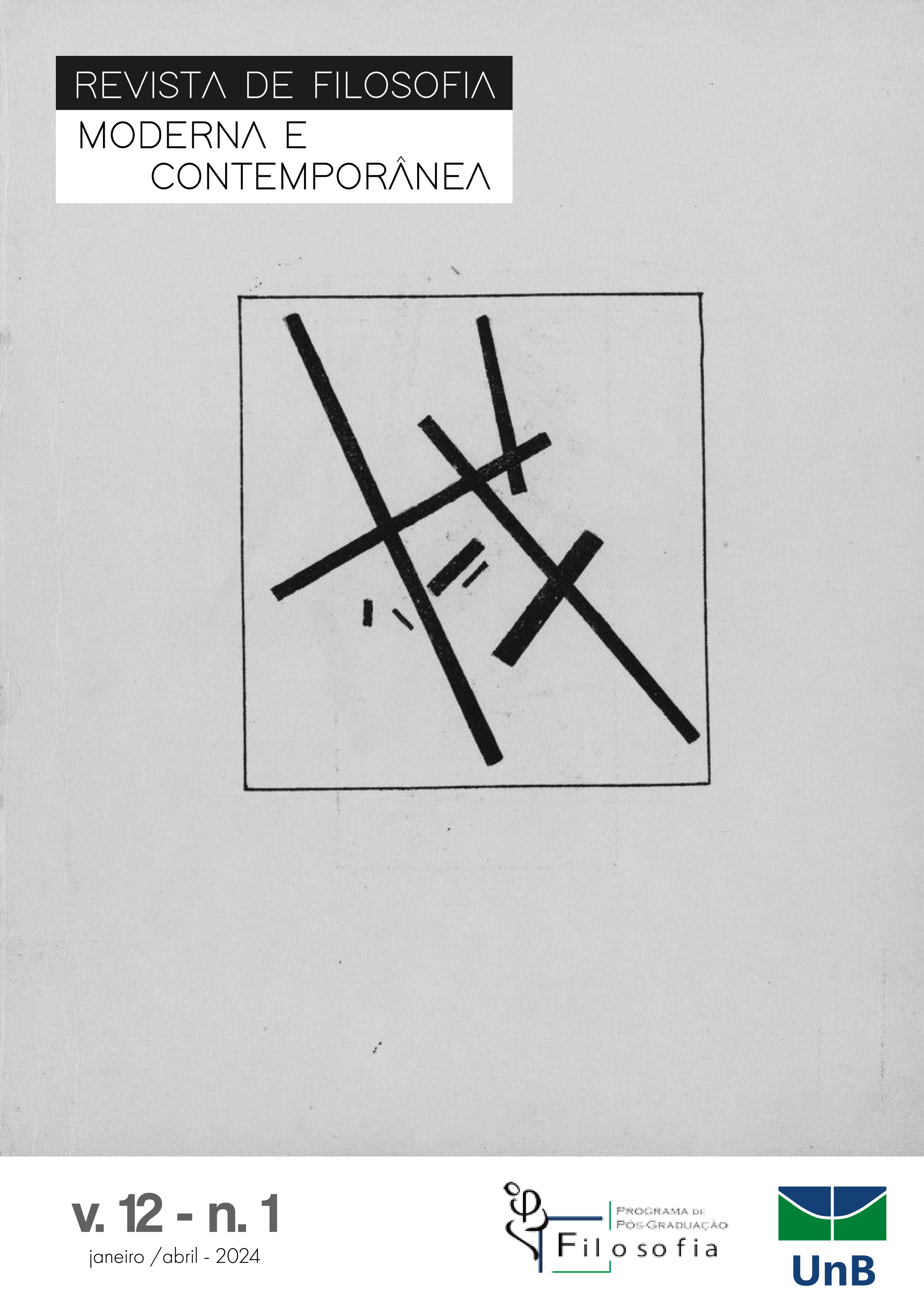The relation between natural order and enlightenment in kant’s thought
DOI:
https://doi.org/10.26512/rfmc.v12i1.52547Keywords:
Order. Teleology. Critique. Enlightenment. Immaturity.Abstract
The aim is to demonstrate the connection between natural order and Enlightenment. It is argued that the maintenance of certain pre-critical theses regarding natural order is incompatible with humanity’s emergence from its immaturity. To elucidate this relationship, it was necessary to start from the second part of the Only Possible Argument in order to expose the connection between natural order and pre-critical theology. Subsequently, it was shown how the Critique of Pure Reason disables the ontological proof of 1763, causing natural order to lose its theological foundation. Subsequently, the relationship between order and system was explored through the Appendix to the Transcendental Dialectic, aiming to introduce the developments of the third critique, in which the philosopher examines the hypothesis of nature’s teleological order.
Downloads
References
ALLISON, H. Kant’s Theory of Taste: A Reading of the Critique of Aesthetic Judgment. Cambridge: Cambridge University Press, 2001.
CASTILLO, Monique. Kant et l’avenir de la culture. France: PUF, 1990.
GIANOTTI, J. A. Kant e o Espaço da História Universal. in KANT, I. Ideia Universal de um Ponto de Vista Cosmopolita. Org. Ricardo Terra. Trad. Rodrigo Novaes e Ricardo Terra. 4 ed. São Paulo: WMF Martins Fontes, 2016.
GRAPOTTE, S. Le concept critique d’« ens realissimum ». Revue philosophique de Louvain, 2003, v. 101, n. 3, pp. 434-455. Disponível em : https://www.jstor.org/stable/26341813. Acessado em: 08/02/2024.
GRIER, M. Kant’s Doctrine of Transcendental Illusion. Cambridge: Cambridge University Press, 2001.
HUNEMAN, P. Métaphysique et Biologie : Kant et la constitution du concept d’organisme. Paris: Éditions Kimé, 2008.
KANT, I. Kants gesammelte Schriften: herausgegeben von der Deutschen Akademie der Wissenschaften, anteriormente Königlichen Preussischen Akademie der Wissenschaften, 29 vols. Berlin, Walter de Gruyter, 1902 – 2010.
______. (KrV) Crítica da Razão Pura. Trad. Fernando Costa Mattos. 4. Ed. Petrópolis: Vozes, 2017.
______. (KU) Crítica da Faculdade de Julgar. Trad. Fernando Costa Mattos. Petrópolis: Vozes, 2016.
______. (BDG) O Único Argumento Possível para uma Demonstração da Existência de Deus. Lisboa: Imprensa Nacional-Casa da Moeda, 2004.
______. (WA) Resposta à Pergunta: O que é Esclarecimento?. Trad. Saulo de Araujo. Estudos Kantianos, 2021, Marília, v. 8, n. 2, pp. 179-189. Disponível em: https://doi.org/10.36311/2318-0501/2020.v8n2.p179: acessado em 08/02/2024.
LEBRUN, G. Kant e o Fim da Metafísica. Trad. Carlos Alberto Ribeiro de Moura. São Paulo: Martins Fontes, 2002.
LONGUENESSE, B. Kant on the Human Standpoint. Cambridge: Cambridge University Press, 2005.
PIMENTA, P. P. G. A Trama da Natureza. São Paulo: Editora Unesp, 2018.
_____. O Direito do Senhor (Crítica do Juízo, §63). Studia Kantiana, 2021, v. 19, n. 1. Disponível em: https://revistas.ufpr.br/studiakantiana/article/view/90215. Acessado em: 08/02/2024.
POLLOK, K. Kant’s Theory of Normativity. Cambridge: Cambridge University Press, 2017.
SERBAN, C-C. L’ ‘idéal de la raison pure’ et la fracture du fonctionnement ontothéologique du possible dans la philosophie critique de Kant. Kant-Studien, 2013, v. 104, n. 2, 2013. Disponível em : https://doi.org/10.1515/kant-2013-0012. Acessado em: 08/02/2024.
THEIS, R. En quel sens l’ « Unique fondement possible d’une démonstration de l’existence de Dieu » de Kant est-il « unique » fondement « possible » ? Revue Philosophique de Louvain, 1997, v. 95, n. 1. Disponível em : https://www.jstor.org/stable/26341304. Acessado em: 08/02/2024.
_____. Introduction et Notes in KANT, I. Unique Argument Possible pour une Démonstration de l’Existence de Dieu. Trad. Robert Theis. Paris : VRIN, 2001.
Downloads
Published
Issue
Section
License
Copyright (c) 2024 Journal of Modern and Contemporary Philosophy

This work is licensed under a Creative Commons Attribution-NonCommercial-NoDerivatives 4.0 International License.
Copyright for articles published in this journal is retained by the authors, with first publication rights granted to the journal. By virtue of their appearance in this open access journal, articles are free to use, with proper attribution, in educational and other non-commercial settings.


